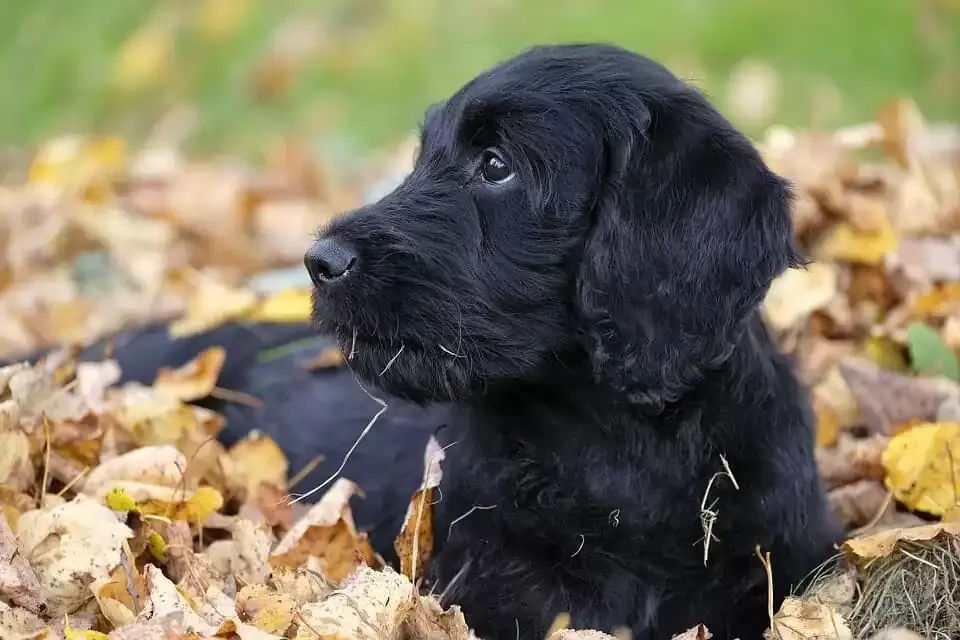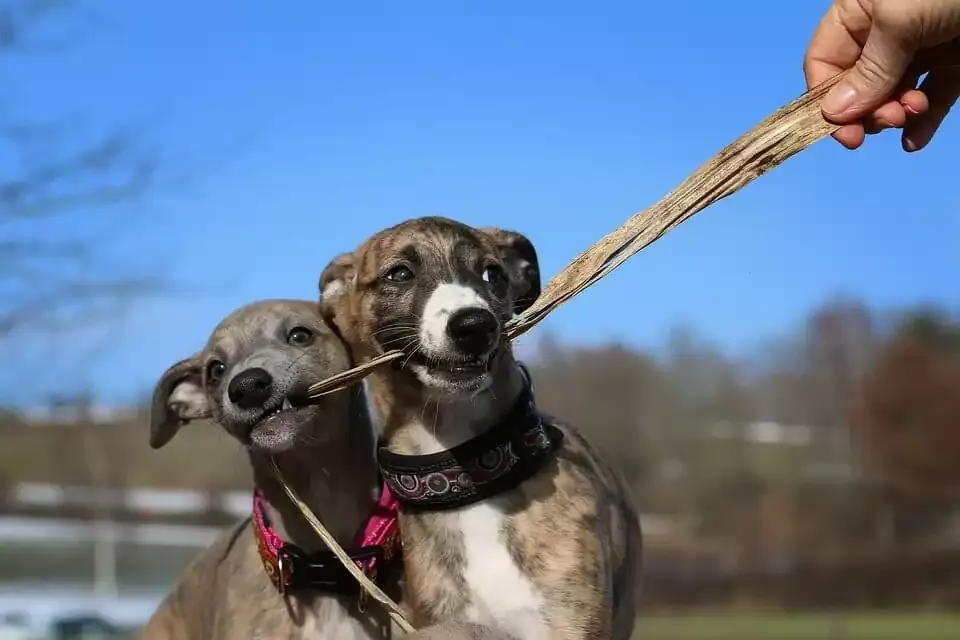Choosing a canine companion is a significant decision, and for many prospective dog owners, a key consideration is shedding. While the idea of a “non-shedding” dog is a common myth—as all dogs shed to some extent—the good news is that many medium-sized breeds are known for their exceptionally low-shedding coats. These breeds can be a fantastic option for individuals or families looking to minimize pet hair around the home or manage certain allergies. Understanding the truth about low-shedding coats and the specific grooming requirements of these breeds is crucial for a happy and healthy partnership. This guide will explore some of the best mid-size dogs that don’t shed excessively, detailing their unique coat characteristics and the care they need.
The term “low-shedding” is far more accurate than “non-shedding.” Even dogs with minimal hair loss will still shed some dead hair, just in much smaller quantities than their heavy-shedding counterparts. Many low-shedding breeds also feature double coats that effectively trap loose hairs. This means that while you won’t find as much fur on your furniture, these dogs often require regular, sometimes daily, grooming to remove the trapped hair and prevent matting, ensuring good skin and coat health. Understanding these distinctions is vital, especially for those considering a breed for allergy reasons. While some low-shedding dogs are often labeled “hypoallergenic,” it’s important to remember that allergies are typically triggered by dander (dead skin flakes), saliva, or urine, not just hair. Therefore, a low-shedding coat might reduce allergen dispersal but may not eliminate reactions entirely. To learn more about selecting the right breed, consider researching dog breed best dog breeds in india.
Top Mid-Size Dog Breeds with Low Shedding Coats
When seeking the perfect mid-size, low-shedding dog, several breeds stand out for their manageable coats and delightful temperaments. Each breed comes with its own set of grooming needs, from weekly brushing to professional stripping, all aimed at keeping their coats healthy and reducing the amount of hair in your home. Let’s explore some of the best contenders in this category.
Basenji
 Basenji dog with alert expression, a low-shedding medium-sized breed known for its clean coat.
Basenji dog with alert expression, a low-shedding medium-sized breed known for its clean coat.
The Basenji, often referred to as the “barkless dog,” possesses a unique and charming personality. They are incredibly clean animals, often described as cat-like in their grooming habits. Basenjis are considered a genuinely low-shedding breed, primarily because their short, fine hair is not easily noticeable when shed. While they are masters at keeping their coats pristine, a weekly brush is still recommended to help remove any dead hairs and maintain the coat’s natural sheen. This minimal grooming requirement makes them an attractive option for those seeking a low-maintenance coat.
Kerry Blue Terrier
This spirited and affectionate terrier makes a wonderful addition to many households. Kerry Blue Terriers are popular among owners who prefer a home free of excessive pet hair due to their low-shedding nature. However, their beautiful blue-grey coat demands diligent grooming. Daily brushing is essential to prevent matting and keep their soft, dense coat in top condition. Additionally, they require professional clipping every four to six weeks to maintain their distinctive appearance and manage coat growth. While they shed minimally, their grooming needs are considerable.
Labradoodle
 A happy Labradoodle with a curly coat, a popular low-shedding crossbreed developed as a hypoallergenic guide dog.
A happy Labradoodle with a curly coat, a popular low-shedding crossbreed developed as a hypoallergenic guide dog.
The Labradoodle, a crossbreed originally developed in Australia, quickly gained popularity for its friendly demeanor and often low-shedding coat. These dogs were initially bred to be hypoallergenic guide dogs. Their coats come in three main types: hair, wool, and fleece. The fleece and wool coats are generally the lowest shedding varieties and are often preferred by those with allergies. Regardless of the coat type, weekly brushing is vital to prevent tangles and remove any loose, dead hair, promoting a healthy skin and coat. When choosing a Labradoodle, it’s particularly important to select a reputable breeder who can provide information on coat quality and shedding tendencies.
Irish Terrier
Known for their fearless and fiery spirit, Irish Terriers are robust dogs with dense, wiry double coats. Like other double-coated breeds, the Irish Terrier’s dead hair becomes trapped within the softer undercoat. This means that while they don’t profusely shed hair onto your floors, the loose hair needs to be manually removed through consistent grooming. Weekly brushing is necessary to manage this, and a professional plucking or stripping session every six months helps to remove the dead hair and encourage healthy new coat growth. This routine ensures their coat remains vibrant and free from discomfort.
Puli
 A Puli dog with its distinctive long, corded dreadlocks, a unique medium-sized breed that requires specific coat care.
A Puli dog with its distinctive long, corded dreadlocks, a unique medium-sized breed that requires specific coat care.
The Puli is instantly recognizable by its striking, corded coat, which resembles dreadlocks. This unique coat certainly makes them stand out, but it also requires very specific care. When young, Puli puppies have a fluffy coat that needs regular brushing to prevent matting and remove dirt. As their adult coat develops, the cords begin to form and may need assistance in separating them to ensure they form properly. Once fully corded, the coat does not require brushing but must be regularly separated and cleaned to prevent matting and maintain hygiene. Consulting with a professional breeder or groomer experienced with Pulis is highly recommended to understand the intricacies of their coat care. For more options in various sizes, you might look into small breed dogs that don t shed.
Standard Schnauzer
The Standard Schnauzer is a popular and handsome breed known for its distinctive wiry coat and intelligent nature. This breed boasts a double coat, where the wiry outer layer effectively traps the loose hairs from the softer undercoat, contributing to their low-shedding reputation. To maintain their sharp appearance and prevent painful matting, Standard Schnauzers require a significant amount of grooming. Their iconic beard and leg furnishings need daily attention, and the entire coat requires hand stripping every six months. It’s important to note that clipping instead of stripping can alter the coat texture and may result in increased shedding.
Tibetan Terrier
Affectionately known as the “Holy Dogs of Tibet,” Tibetan Terriers are charming companions with long, beautiful double coats that can be wavy or straight. While they are considered low-shedding, their luxurious coat demands daily grooming to prevent tangles and mats from forming. This breed requires a considerable time commitment to keep their coat looking its best and healthy. Many Tibetan Terrier owners opt to enlist the expertise of professional groomers to help manage their extensive coat care needs, especially ensuring the undercoat is reached during brushing to remove tangles. Without consistent grooming, their coat can quickly become unmanageable.
Welsh Terrier
Welsh Terriers are lively and comical dogs, well-regarded for their engaging personalities. Like most low-shedding breeds, their wiry coats demand a fair amount of grooming attention. Regular brushing, at least three times a week, is essential to keep their coat in good condition and minimize shedding. Some owners choose to have their Welsh Terriers clipped, which can simplify maintenance but may lead to a slight increase in shedding. Alternatively, many owners prefer to have their dog’s coats professionally hand-stripped every six months, which helps remove dead hair and preserve the coat’s natural texture and low-shedding qualities.
Soft-Coated Wheaten Terrier
The Soft-Coated Wheaten Terrier is admired for its stunning, silky, and wavy coat that is unique among terriers. While they only have a single coat, preventing matts and tangles requires daily grooming. Owners who prefer a slightly scruffier appearance for their adorable pooches might be able to reduce grooming to three times a week, but consistency is key. Many Wheaten owners also take their dogs to a professional groomer for regular trimming and clipping to maintain a manageable length and ensure the coat remains healthy and free of mats. This breed’s coat requires dedication to keep it beautiful and comfortable. Consider researching medium sized dogs that dont shed much for more insights.
Whippet
 Whippet running gracefully, an energetic medium-sized dog known for its minimal shedding and sleek, thin coat.
Whippet running gracefully, an energetic medium-sized dog known for its minimal shedding and sleek, thin coat.
The Whippet is an elegant, energetic, and popular choice among owners seeking a low-shedding companion. Known as a “wash-and-wear” breed, Whippets require minimal grooming to stay in pristine condition. A simple weekly brush is usually sufficient to remove any dead or loose hairs, keeping their sleek, thin coats smooth and healthy. Due to their very short and fine coat, it’s important to take care to protect their skin, as it can be more prone to minor scrapes or injuries. Their minimal grooming needs make them an excellent option for those with less time for daily coat maintenance. For insights into larger low-shedding breeds, explore large dogs that don t shed a lot.
Understanding Hypoallergenic Dog Breeds
When considering a low-shedding dog, many people are looking for a “hypoallergenic” breed. It’s crucial to clarify what this term truly means in the context of pet allergies. As mentioned, no dog is 100% hypoallergenic, as allergies are triggered by dander (microscopic skin flakes), saliva, and urine, not just hair. However, breeds that shed less can be more suitable for allergy sufferers because they release fewer allergens into the environment.
Before bringing any dog into your home, especially if you or a family member has allergies, it is highly recommended to consult with your doctor to identify the exact allergens you are reacting to. Visiting a breeder and spending significant time with your chosen breed before committing is also invaluable. This allows you to observe your reactions and determine if your allergies can cope with consistent contact. This proactive approach can help you make an informed decision and ensure a harmonious living situation for everyone.
Conclusion
Finding the best mid-size dogs that don’t shed can significantly reduce the amount of pet hair in your home and potentially alleviate allergy symptoms. From the self-grooming Basenji to the elegantly corded Puli, and the dedicated grooming required by Terriers, there’s a diverse range of breeds to choose from. Each of these low-shedding companions offers unique characteristics and varying grooming needs, emphasizing that “low-shedding” doesn’t necessarily mean “low-maintenance.” While they may not blanket your home in fur, their coats often require regular brushing, stripping, or professional grooming to remain healthy and beautiful. By understanding these requirements, you can select the perfect four-legged friend that fits your lifestyle and helps maintain a cleaner, more comfortable home environment. We encourage you to explore our other articles for more helpful canine insights and tips on pet care.
